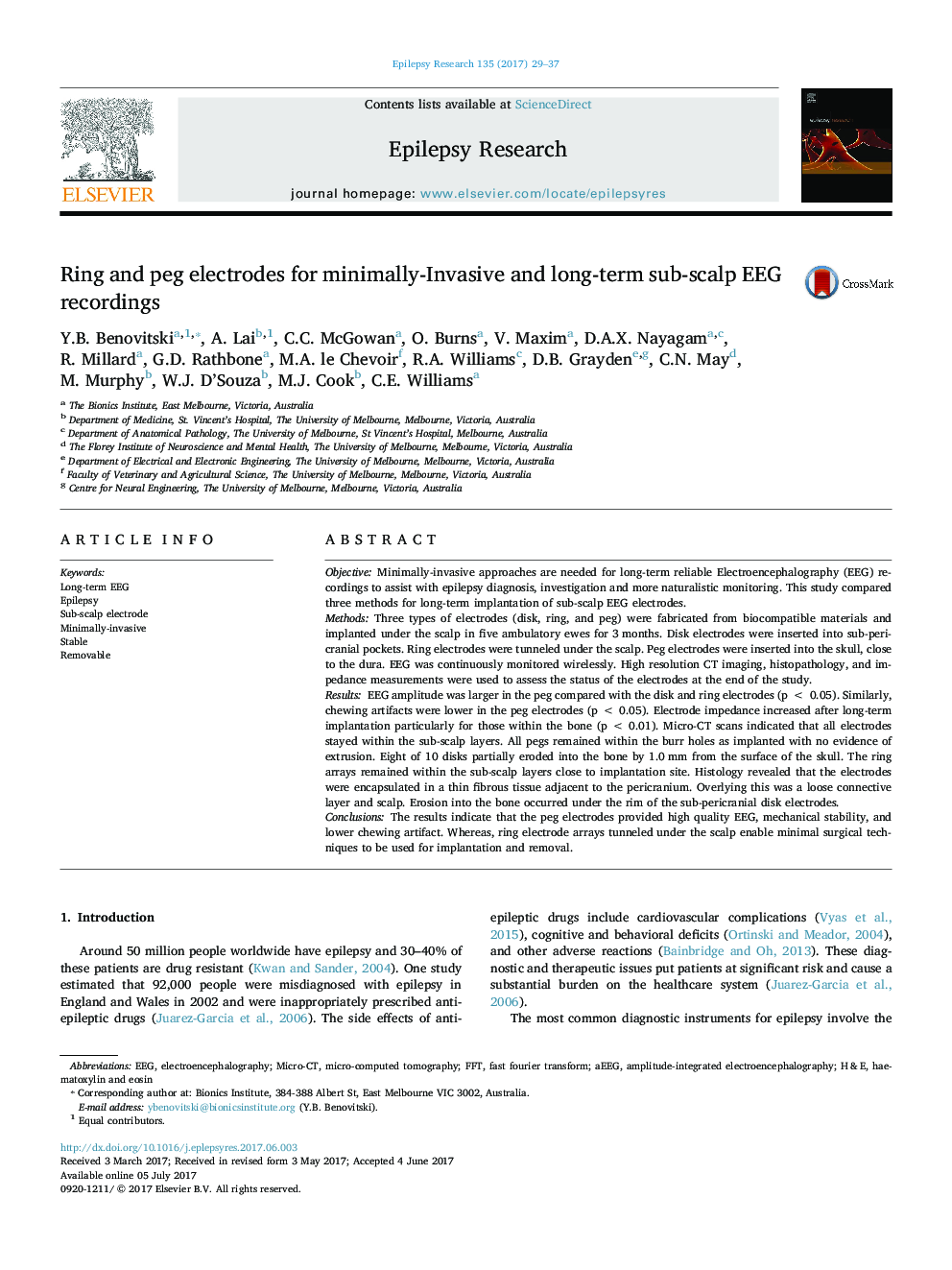| Article ID | Journal | Published Year | Pages | File Type |
|---|---|---|---|---|
| 5628723 | Epilepsy Research | 2017 | 9 Pages |
â¢Minimally-invasive approaches are needed for long-term EEG recordings in epilepsy.â¢We compared three methods for long-term implantation of sub-scalp EEG electrodes.â¢Peg electrodes provide high quality EEG, lower artifact, and mechanical stability.â¢Sub-pericranial disk electrodes can move and erode into the skull.â¢Tunneled ring electrodes are minimally-invasive and easy to remove.
ObjectiveMinimally-invasive approaches are needed for long-term reliable Electroencephalography (EEG) recordings to assist with epilepsy diagnosis, investigation and more naturalistic monitoring. This study compared three methods for long-term implantation of sub-scalp EEG electrodes.MethodsThree types of electrodes (disk, ring, and peg) were fabricated from biocompatible materials and implanted under the scalp in five ambulatory ewes for 3 months. Disk electrodes were inserted into sub-pericranial pockets. Ring electrodes were tunneled under the scalp. Peg electrodes were inserted into the skull, close to the dura. EEG was continuously monitored wirelessly. High resolution CT imaging, histopathology, and impedance measurements were used to assess the status of the electrodes at the end of the study.ResultsEEG amplitude was larger in the peg compared with the disk and ring electrodes (p < 0.05). Similarly, chewing artifacts were lower in the peg electrodes (p < 0.05). Electrode impedance increased after long-term implantation particularly for those within the bone (p < 0.01). Micro-CT scans indicated that all electrodes stayed within the sub-scalp layers. All pegs remained within the burr holes as implanted with no evidence of extrusion. Eight of 10 disks partially eroded into the bone by 1.0 mm from the surface of the skull. The ring arrays remained within the sub-scalp layers close to implantation site. Histology revealed that the electrodes were encapsulated in a thin fibrous tissue adjacent to the pericranium. Overlying this was a loose connective layer and scalp. Erosion into the bone occurred under the rim of the sub-pericranial disk electrodes.ConclusionsThe results indicate that the peg electrodes provided high quality EEG, mechanical stability, and lower chewing artifact. Whereas, ring electrode arrays tunneled under the scalp enable minimal surgical techniques to be used for implantation and removal.
Graphical abstractDownload high-res image (234KB)Download full-size image
